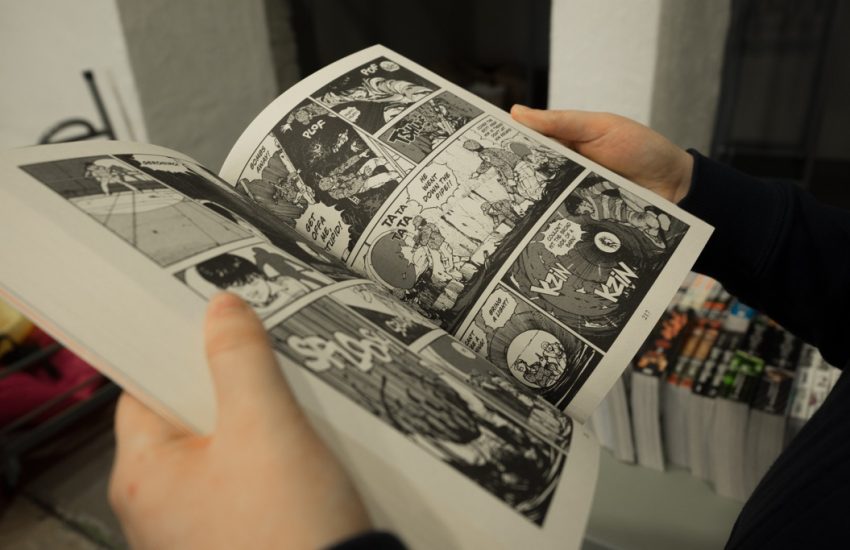SXSW: Trump vs. the NYT, algorithmic news and other cool things we heard over kickoff weekend
Storybench flew all the way to Austin, Texas to attend South by Southwest, the world-renowned tech-and-innovation conference. Reporters Rachel Grozanick and Felippe Rodrigues, both students in Northeastern’s Media Innovation program, are on the ground checking in on what’s new and innovative in the fields of journalism, design, storytelling, AR/VR, data and visualization. We decided to round-up some of the most interesting things we heard over the last few days.
Nick Denton talks “Life after Gawker”
#SXSW: Gawker's Nick Denton eyes the messaging space. Facebook makes him despise his friends; Twitter, the world. https://t.co/BEg5a83Vtx pic.twitter.com/0uwnEoi5U8
— Ad Age (@adage) March 13, 2017
Over the weekend, the controversial founder of now-defunct Gawker Media got real about journalism, the scandal that brought down his digital media empire, and his future projects in media. According to Denton, the purpose of his flagship website, Gawker.com, was to be “sensationalized gossip” and a “dramatic version of the truth.” He admitted that the Hulk Hogan story, which ultimately brought him down, “was certainly close to the line,” though he assured the audience that if given the chance, he would do Gawker all over again.
Denton, who describes himself as “a radical centrist,” as opposed to Gawker’s “leftist-leaning” nature, revealed his interest in community-building, something that he tried to instill in the websites he owned, and said he is considering “doing something around messaging and online forums.”
National Geographics’s Cory Richards on beauty and truth in photography
https://www.instagram.com/p/BRgS449ADrG/?taken-by=coryrichards
Photographer Cory Richards has intimately covered humans and hardship across the globe for National Geographic. From the Bajo in Indonesia to Pakistani soldiers on the Indian border, his work has covered trauma—of displacement, of war, of nature. In his almost uncomfortably personal keynote at SXSW, he talked about his own trauma and how work became a means of trying to escape from it. Ultimately, he admitted, his work became a means of confronting that trauma.
“Why am I always somehow managing to find the hardest way to do everything in my life? I’m still asking myself this question,” he explained. “But I think the answer is, when we intentionally engage in the most challenging method, we’re forced to face the realities of the landscape, but internally and externally. And these journeys are about truths.”
Ultimately, it is truth and authenticity that Richards wants to convey, whether it’s about the journey or himself. “Sure, there’s beauty—beauty persists. It persists everywhere,” he said, even in landscapes and populations that are threatened, struggling, and neglected. But as Richards pointed out by talking about his popular and raw Snapchat coverage of climbing Everest without oxygen, “how effective is it when you’re actually authentic? How much more do people connect when you stop just putting the beautiful stuff up, but you start putting the real stuff up?”
Algorithmic solutions for journalism
Claire Woodcock, a digital media strategist, and Fredric Káren, editor-in-chief at the Swedish newspaper Svenska Dagbladet, spoke at SXSW about two very different approaches to algorithms that have a common thread: to help advance journalism by letting journalists focus on reporting, the most fundamental part of their craft.
Woodcock wants to do that by getting readers to break out of their personal echo chambers. The approach, she said, is simple enough, and in fact is already being used by Netflix in their automated suggestions algorithm. Applied to journalism, an algorithm like this could expose news consumers to articles they would not normally see and, thus, “heal” the filter bubbles. (On a related note, an app called “Read Across the Aisle” is trying to do the same.)
"For 59% of links shared on Facebook, the sharer hasn't clicked on link first" Claire Woodcock, Fixing our social media algorithms @ #SXSW
— Ned Moorfield (@NedMoorfield) March 11, 2017
At Svenska Dagbladet, Káren’s team is creating an algorithm that runs their news. Writers and editors set news value and lifetime and the machine decides what is frontpage-worthy. The Swedish experience of disrupting the newsroom with technology has driven up subscriptions and resulted in extra time for journalists to dedicate to reporting, the editor-in-chief claimed.
"Newsletters on special topics are created automatically based on story tags", @fredrickaren @SvD #SXSW #NUsxsw #CAMDsxsw
— Felippe Rodrigues (@fsorodrigues) March 11, 2017
VR can make dreams come true
Catch Chris Milk in the "This Is Not a Game..or a Movie #VR Panel in the ACC Room 16AB at 3:30pm! #SXSW https://t.co/ceLycyBY9X
— SXSW (@sxsw) March 14, 2017
If you wanted to pinpoint someone at the forefront of VR media, someone who is pushing it beyond its current scope, Chris Milk is your man. Milk, who has directed music videos for Kanye West, Arcade Fire, Johnny Cash, and Modest Mouse, is also the founder of Here Be Dragons, a VR creative agency, and VR company Within, and he’s created virtual reality experiences for the United Nations, The New York Times, Vice, Apple, and Conservation International. His explanation of how virtual reality is unlike any media that’s come before it is fascinating:
“I’m trying to crack the code of what this medium grows to be, right?” Milk said. “And I don’t think it’s video games. And I don’t think it’s VR videos or movies that you watch from an inside perspective. Both are really compelling and amazing, and I love them, and I’ve made a lot of them but I don’t think that’s what it is. I don’t think that’s where it goes. Where I think it goes is something that looks more like a shared dream.”
“The dream is sort of like this canvas where anything can happen,” he continued. “And it could happen on Earth. It could happen up in space—anything is possible when you dream. But imagine you and your friends are able to go into the dream together, and when you come out of it, you have the shared experience. I think it looks more like that.”
Interactive data analysis is the future
Data visualization guru and computer science professor Jeffrey Heer, one of the minds behind D3.js, fascinated two full-capacity SXSW sessions showcasing the tools he and his teams at the University of Washington’s Interactive Data Lab and Trifacta, a company he founded, created to make working with data easier for us mortals.
Heer spoke about “predictive interaction” applications like DataVoyager, which suggests the most relevant visualizations to a user as well as allowing a user to explore, analyze and fact-check databases, and DataWrangler, an intuitive, easy-to-use way of cleaning and formatting databases.
But before we let technology do all the analysis and visualization, Heer explained, we must engineer in the human touch. Journalists, scientists and data nerds, he said, should always have control when working with data. “Having a human on the loop while exploring data, weighing automation and active critical thinking is fundamental,” Heer said.
The New York Times is ready for Trump’s presidency
Dean Baquet (NYTimes) thanks Donald Trump for making journalism great again #SXSW pic.twitter.com/FjYqEoF9ty
— Robert Andersen (@_robertandersen) March 12, 2017
The largest journalism-related session so far featured at SXSW was when The New York Times media columnist Jim Rutenberg and the paper’s executive editor Dean Baquet discussed how the newspaper is taking on the mission of covering president Donald Trump, how it is competing with the fake news phenomenon, and how it’s battling Trump’s portrayal of the paper as “the enemy of the people.”
“Our job is not to be opposition to Trump. It is to cover the hell out of him,” stressed a very straightforward Baquet in between puns with Rutenberg. According to the executive editor, the next few years may become the story of a generation. The newsroom has been staffing up and getting ready for that eventuality.
“The failing New York Times,” as the panel was ironically titled in homage to Trump’s oft-repeated taunt, had Baquet acting as a fierce advocate for the truth—or at least the journalist’s fierce pursuit of it. He repeatedly rejected the post-truth, alternative-facts and fake news-era established by the new administration and others.
“Reporting is reporting. People who advance conspiracy theories didn’t go to Libya. We did,” he said, referring to the Clinton-Benghazi debate and Trump’s Twitter habits. “It is more important to cover this and say it is false than to ignore it.”





